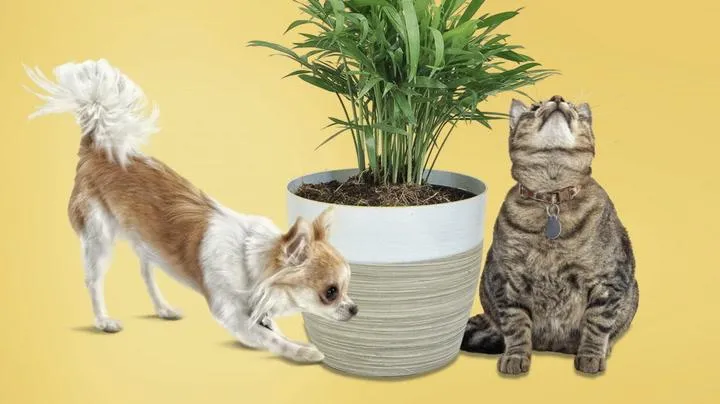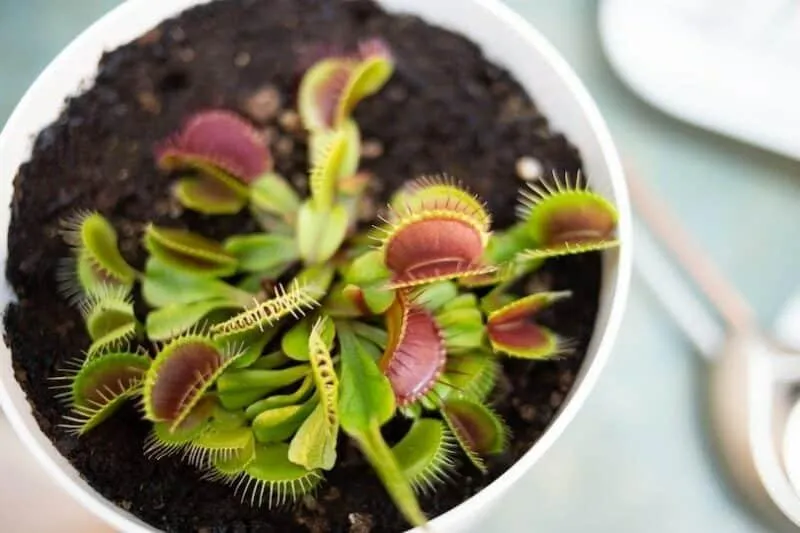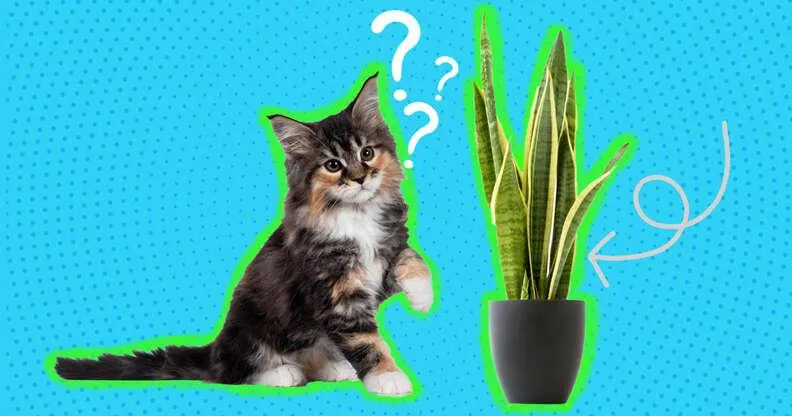Are Venus Flytraps Toxic to Cats? What You Need to Know
If you have a Venus flytrap plant and a cat in your home, you may be wondering – are Venus flytraps poisonous to cats? The short answer is yes, most parts of the Venus flytrap plant can be toxic to cats if ingested. However, with proper care and cat-proofing of your plants, you can keep your furry friend safe while still enjoying this unique carnivorous plant.
Why are Venus Flytraps Toxic to Cats?
Venus flytraps contain raphides, or needle-shaped calcium oxalate crystals, throughout their plant tissues. These crystals act as a defense mechanism, allowing the plant to trap and digest insects. However, they can also cause irritation and even damage if consumed by cats or other pets. Themilky white sap secreted by damaged flytrap leaves and stems also contains irritants that can upset a cat’s digestive system.
From my experience as a veterinary technician, calcium oxalate poisoning is one of the most common plant toxins we see in cats. Symptoms can range from mild mouth irritation to more severe drooling, vomiting, loss of appetite, and potentially kidney damage if a large amount is ingested. The raphides and sap in Venus flytraps are concentrated sources of these toxins. So while a single lick may not cause issues, chewing or swallowing any part of the plant poses health risks for curious kitties.
Is Every Part of the Plant Toxic?
Not necessarily. The largest threat comes from eating leaves, stems, traps, and flowers of the Venus flytrap. However, the roots are generally considered non-toxic if ingested in small quantities.
At the same time, it’s still best to keep roots out of paws’ and mouths’ reach if possible. Young, tender roots could still cause digestive upset. And cats may be tempted to chew on roots while plants are repotting. So for safety’s sake, I advise treating the entire plant and soil as potentially hazardous for cats.

Signs Your Cat May Have Ingested Venus Flytrap
Be on the lookout for these signs that indicate your cat may have sampled your Venus flytrap:
- Drooling or pawing at the mouth
- Vomiting
- Diarrhea
- Loss of appetite
- Excessive thirst
- Lethargy
If you notice any of these symptoms, it’s important to contact your veterinarian right away. They can examine your cat and determine if treatment is needed based on how much of the plant was consumed.
How to Cat-Proof Venus Flytraps
There are some effective strategies to keep curious cats away from your carnivorous plants:
- Keep flytraps in high places out of paw and jump reach, like on shelves or hanging baskets.
- Use opaque containers instead of terrariums so the plants aren’t as enticing.
- Display plants separately from cat food/water bowls to avoid associations.
- Cover soil surfaces with mesh or stones to deter digging and root-chewing.
- Grow flytraps outdoors if possible, within fenced gardens cats can’t access.
- Distract cats with other plant-safe toys, scratching posts and catnip away from flytraps.
With diligent supervision of cats around repotting times and strategic placement high up, you can basically enjoy both your feline friend and carnivorous companions safety.
What to Do if Your Cat Ingests Venus Flytrap
If prevention fails and your cat does chew on or eat parts of a Venus flytrap, here are the steps to take:

- Remove the plant from your cat’s reach immediately.
- Induce vomiting only if you witnessed the ingestion within the past hour and it was a small amount. Seek vet guidance on how to do so humanely.
- Call your veterinarian or an animal poison control hotline for guidance on next steps and monitoring.
- Be prepared to take your cat directly to the vet for examination and potential treatment like administering activated charcoal or medications to induce vomiting.
Monitor your cat closely for any concerning symptoms from toxin exposure and follow all medical advice. Most importantly, do not try to induce vomiting at home for large ingestions or if symptoms are present.
Alternatives to Venus Flytraps for Cat Owners
If you love carnivorous plants but worry for your cat’s safety, consider safer display options like:
- Pitcher plants (Sarracenia spp.) – while sapping insects, their traps are less tempting morsels.
- Sundews (Drosera spp.) – these tiny dew collectors are low growing and less eye-catching.
- Butterworts (Pinguicula spp.) – their flat, succulent leaves don’t resemble traditional plants.
- Non-carnivorous houseplants like pothos, snake plant or spider plant.
Basically, prioritize cat safety over display appeal. There are still stunning plant options that cats won’t be drawn to munch. Just be diligent about securing poisonous specimens until curious kittens are grown.
In Summary…
Venus flytraps contain irritating calcium oxalate crystals and soluble toxins that can potentially make cats sick if ingested. While the roots alone may not be as risky, it’s best to consider the whole plant and soil off limits. With caution around these plants and strategic high placement away from food/water and out of paws’ reach, you can hopefully keep both feline friends and carnivorous companions thriving in your home.
Remember to call your vet right away if you spot any signs of plant exposure. With prompt medical care, chances of full recovery are good. Overall, be cautious gardening with cats in mind, as their natural instinct to nibble can land them in trouble around toxic specimens. I hope this helps answer any questions about keeping both safe!

How toxic are venus flytraps to cats?
| Characteristic | Details |
|---|---|
| Toxicity level | Low risk of toxic effects. Ingesting venus flytraps is unlikely to cause anything more than mild gastrointestinal upset. |
| Components of concern | Venus flytraps contain oxalate crystals which can potentially irritate the mouth and stomach if large quantities are consumed. |
| Signs of toxicity | Vomiting, diarrhea, drooling. More severe effects like breathing difficulties or seizures are very rare. |
| Prevention | Keep venus flytraps out of reach of cats. Monitor plants for signs of chewing or other interaction. Seek veterinary attention if ingestion is observed or suspected. |
| Outlook | With proper care and monitoring, venus flytraps can be safely kept in a home with cats. Toxic effects are generally mild if consumed, but prevention is still best. |
FAQ
-
Are venus flytraps toxic to cats?
Venus flytraps contain calcium oxalate crystals which can irritate the mouth and throat of cats. However, the amount of calcium oxalate in a single plant is low and unlikely to cause more than minor discomfort to most cats. At the same time, there is always a chance a curious cat may eat several plants, so it’s best to keep venus flytraps out of reach of cats. On the other hand, the plant’s digestive juices are not strong enough to harm cats. Nevertheless, it’s best not to allow cats to chew on venus flytraps just to be safe.
-
What are the signs that a cat has eaten a venus flytrap?
If a cat were to consume part of or an entire venus flytrap, the owner may notice some drooling, pawing at the mouth, or foaming due to irritation. The cat may also try to vomit. More serious symptoms would include vomiting, diarrhea, or loss of appetite. These symptoms would likely only occur if a cat ate several venus flytraps. However, most cats show no ill effects from chewing on or swallowing a single venus flytrap.
-
Can venus flytraps be poisonous to cats in large quantities?
It’s possible that ingesting a very large number of venus flytraps may cause more significant issues for a cat due to the cumulative effect of the calcium oxalate crystals. The plant Expert Elena Rhodes notes that while a single venus flytrap is unlikely to harm a cat, eating several could potentially cause stomach or intestinal upset. Nevertheless, cats would really have to chow down on a lot of the plants for this to happen. It’s generally not a major health concern as long as owners keep the plants out of reach.
-
Is it okay to let my cat chew on venus flytraps for entertainment?
While an occasional nibble of a venus flytrap won’t inherently harm most cats, experts like board-certified veterinary toxicologist Dr. Ahna Brutlag advise against allowing cats to routinely chew or play with the plants. The jagged edges of venus flytraps could pose a choking hazard for curious kitties. At the same time, the calcium oxalate crystals are an irritant. It’s best to provide cats with catnip toys or other approved chew toys and keep venus flytraps as an off-limits houseplant.
-
Are there any precautions I can take with venus flytraps and cats?
To be safe, cat owners with venus flytraps should take some simple precautions. Keep the plants high up and out of reach of jumping cats. Use a weighted bottom on the container to discourage knocking over. Monitor kitty closely if near the plants. Consider potting venus flytraps separately from other houseplants cats may be allowed to chew as green therapy. Despite risks being low, it’s best not to take chances with pets’ health whenever possible.

-
Is there anything else I need to know about venus flytraps and cats?
In summary, while venus flytraps are not generally toxic enough to seriously endanger cats, it’s still best to take precautions to prevent kitty from chewing or eating them, as the sharp edges and calcium oxalate crystals can cause irritation and potential digestive upset. Many cat parents find it’s simply not worth the risk and keeps venus flytraps out of reach as a precaution. Ultimately, the best advice is to monitor curious kitties closely and contact your vet right away if concerned about possible plant ingestion.
